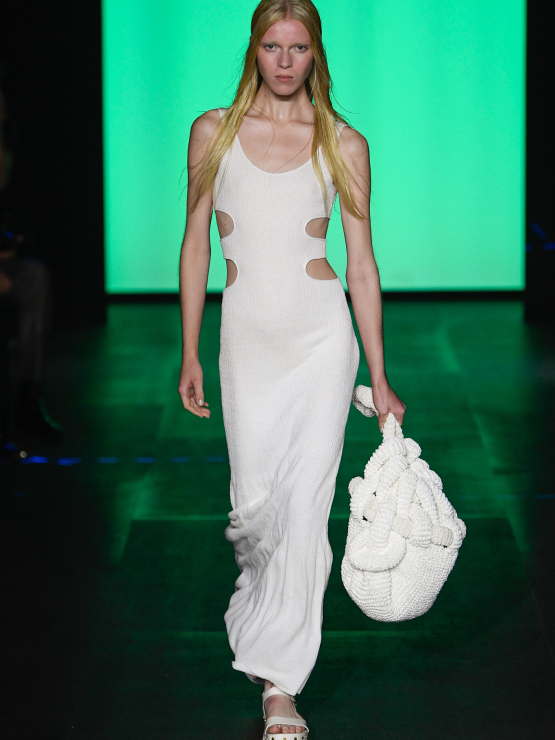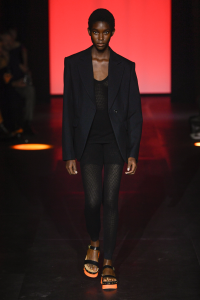Fashion Tech is Helping Circular Economy Initiatives
- Lena Mayberry

- Dec 12, 2022
- 6 min read
By Lena Mayberry

The circular economy is gaining traction as a viable commerce channel, and fashion technology is contributing to this growth. Virtual clothes demonstrate how circular economy operations may be scaled up to provide benefits like increased production flexibility, on-demand manufacturing, and sustainability. Furthermore, fashion technology may help to extend a product's lifetime value by supporting recommerce processes and providing information about customer preferences. As more people become conscious of the wastefulness of traditional product manufacturing, digital clothing is expected to become more widespread.
The circular economy is proving to be an emerging commerce channel.
According to a recent ThredUp survey of 3,500 American adults and 50 fashion companies, the world's secondhand goods market is predicted to grow by 24% in 2022. The U.S. secondhand market is forecast to double by 2026 and reach $82 billion, according to the 2022 Resale Report. Brands are recognizing that they can retain control of their products over their entire lifecycle with the right strategy and tools in place. (Read, Fashion Brands are Tapping Into the Circular Economy to discover innovative ways retail brands are approaching recommerce.)
How do virtual clothes fit into the fashion industry's circular economy?

Virtual clothes are an excellent example of successfully implementing large-scale circular economy practices. In addition to being able to reuse and recycle digital assets over time, digitizing clothing allows for greater flexibility in production—you're no longer limited by how many garments you can make at once or where they came from geographically; now design teams have access to digital prototypes no matter where they live or what kind of budget they have!
Digitization also allows for on-demand manufacturing: Instead of mass producing goods before knowing if anyone wants them (like traditional factory lines), companies can test designs online until someone buys them. This cuts down on wasted materials by allowing designers to make as many prototypes as necessary until something sells well enough for mass production. When 3D assets and Virtual Try-On technology are coupled, fashion companies may even use the insights gained to estimate what sizes and designs their target audience will like and dislike based on online shopping behavior.
Finally, digitized clothing allows for greater sustainability. In fact, the average garment can take up to 1,000 liters (264 gallons) of water to produce, with most going straight down the drain after use.
So what does all this mean for the future of fashion? It means that, as more people realize how wasteful traditional garment manufacturing is, they'll be looking for new ways to create clothing. And clothing made with digital technology offers a whole host of benefits that aren't available through mass production or traditional tailoring. (See How to Get the Most Out of Your 3D Assets.)

Garment digitization and Virtual Try-On technology could aid in recommerce initiatives for brands like Levi's, which have staple garments with high demand and resale value, such as their three most popular vintage jean styles: the 501, 505, and 517.
“It's all I want to wear, and it's the only thing I want to buy. This is easier said than done, which I didn't learn until I was in the fitting room at a vintage pop-up shop in SoHo trying on what seemed like my 50th pair.”, says Andrea Cheng from InStyle magazine. “It was a disheartening process and the search seemed futile — so much so that at one point the shop's denim expert began to avoid eye contact and hint at what I suspected 25 pairs ago, "We might not have anything for you."
Finding a pair of vintage denim jeans that fit you can be a time-consuming, and often emotional endeavor. Customers can discover the proper size and fit for such vintage staples with Virtual Try-On solutions. With Couture Technologies, customers can generate their digital avatar on a brand’s website with just two photos and easily try on as many pairs as they need to effortlessly find the right fit.
Fashion technology can increase a product’s lifetime value.
The range of these innovations across digital and physical technologies, such as AI/machine learning, Virtual Try-On (VTO), Internet of Things (IoT), and sharing platforms, among others, play a critical role in enabling circular business models by increasing efficiencies and reducing waste; driving innovation by allowing new entrants into markets; increasing information transparency, allowing companies to gather insights; and enabling them to stop using the conventional, scarce, or resource-intensive materials.

Burger King, for instance, ceased handing out free plastic children's toys and started providing its young customers with an immersive, outdoor-themed augmented reality game called "Animal Planet". This is one manner in which technology has aided in the dematerialization of sectors of the economy that are excessive to fundamental needs.
Various dematerialization solutions are being tested in the fashion industry in order to solve the industry's substantial relationship with pollution and waste generation. Several brands are tackling the industry's high return rates by creating software that allows people to virtually try on clothes at home.
By using 3D tracking software to scan body shapes in combination with 3D digitization software to simulate the physical experience of trying on clothes, they can significantly reduce the amount of unsold clothing sent to landfills or that is burned, as well as the resources used in the transportation and handling of unwanted items. Such technologies lessen the risk of returns. However, ensuring that each item of clothing purchased is used for as long as possible is a vital component of a fashion circular economy.
With the right fashion tech partner, they may even be able to provide digital IDs to a brand’s product. For instance, the Chloé Vertical digital id project, which places QR codes on chosen items across all categories and enables traceability from field to finished piece, was first introduced with the brand's Spring 2023 collection. By 2025, Chloé plans to have a digital ID on every one of its products.
Chloé is currently looking for options to launch a second-hand project in the near future. As part of the Prince of Wales’ Sustainable Markets Initiative (SMI) Fashion Taskforce, they are committed to rolling out a Digital ID – a transformative innovation that uses data to inform customers of sustainability credentials of their purchases – along with a circular data protocol. This technology will unlock new opportunities for circularity at scale as key players in the fashion value chain will be able to provide unprecedented transparency and traceability of their products.
The garment’s ID could contain transparent data in regard to which collection it’s from, when it was released to the public, how many pieces were made of that item, where the material was sourced from, where they were manufactured, care instructions, its resale history, and consumers can then make an informed choice if they want to purchase a product based on the quality and sustainability.
For independent creators that have powerful resell communities or brands that know that some of their items are immediately going to have a resale value, this technology could enable them to receive “royalties”, where the original creator gets a percentage of the sale each time.
Digital IDs, 3D digitization software, and Virtual Try-On software are becoming more prevalent in e-commerce today. Fashion technology is blurring the lines between product and experience design. The fashion industry can maximize its circular economy initiatives by investing in the right tech. It’s truly a matter of integrating fashion technology into everyday workflows, which will allow businesses to be more competitive—and maybe just make the whole world a little more fashionable.
The fashion circular economy presents unique opportunities and challenges for designers, retailers, and consumers. The key to meeting these challenges is to find the right partner to share expertise and resources in order to find workable solutions. It's quickly becoming a key driving force for companies to improve the customer journey and significantly boost revenues. Plus, consumers are looking for innovative and unique products. Full integration of fashion technology is yet to materialize across the entire industry, but will likely continue to grow as innovative products are created for various applications and uses.
If you have any inquiries, want more details, or want to test out Couture Technologies' Virtual Try-On solutions go to: couturetechnologies.com







Comments